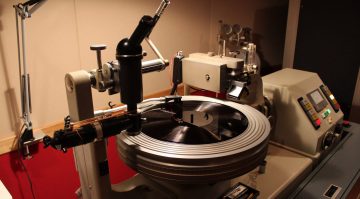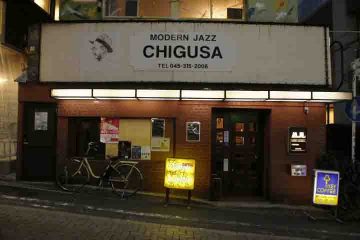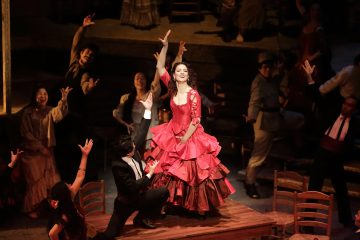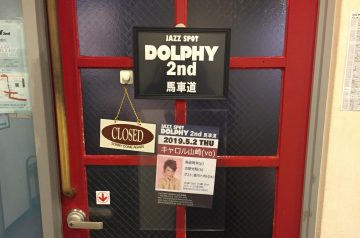Interview with Shuta Hasunuma and Yuko Mouri | Composing and scoring a space
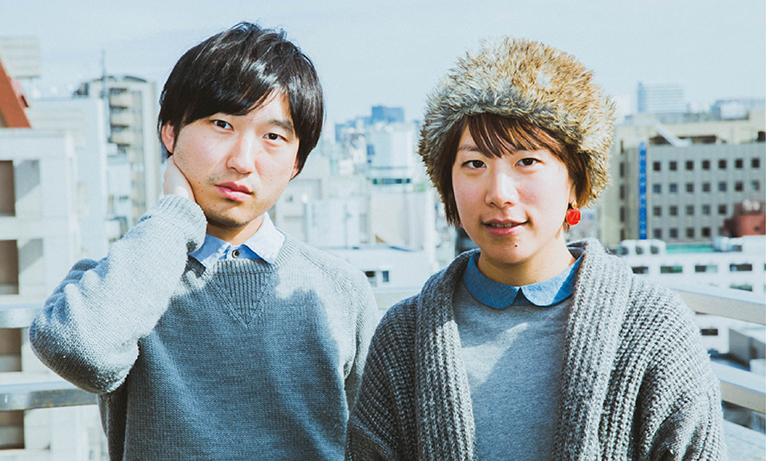
The 18th TPAM International Performing Arts Meeting 2014 will finally open on February 8th.
We interviewed musician Shuuta Hasunuma, who recently released his album "Time plays – and so do we." and will be presenting "Composition: New Phil" at KAAT Kanagawa Arts Theatre. We also interviewed Yuko Mori, the visual artist in charge of the stage set. This will be the second time the two have performed together since TPAM in 2012.
With the performance approaching, I would like to talk about my thoughts on this production, as well as my thoughts on the framework of "performing arts" in which I participate as a musician and visual artist.
It was an interview where we could hear a lively conversation, almost like a meeting.
Cooperation: International Performing Arts Meeting in Yokohama 2014 http://www.tpam.or.jp/2014/
Interview&Text by Masanobu Nishino
Photo by Kouta Hikichi
■Shuta HASUNUMA
Born in Tokyo in 1983. Hasunuma has released musical works, organized the Hasunuma Shuta Philharmonic Orchestra and has produced numerous concerts both in Japan and overseas, commissioned works, films, advertisements, performing arts, contemporary art, music productions, and collaborations with other genres. In 2013, he held a solo exhibition, "Soundlike," in Tokyo and Kobe. In January 2014, he released the album, "Time plays — and so do we." by the Hasunuma Shuta Philharmonic Orchestra. Since early summer 2014, he has been staying in New York, USA, at the invitation of the Asian Cultural Council (ACC).
http://www.shutahasunuma.com
■Yuko MOHRI
Born in Kanagawa Prefecture in 1980. He creates installation works that sense invisible forces such as magnetism, gravity, light, and temperature by placing three-dimensional objects reconstructed from everyday items, junk, and machine parts in the exhibition environment. His major solo exhibitions include "Orochi" (wateringroom) in 2013, "Circus" (Bloomberg Pavilion, Museum of Contemporary Art Tokyo) in 2012, and major group exhibitions include "Media Art Kitchen" (National Gallery of Indonesia, Jakarta) in 2013, "Art and Music - Seeking a New Synesthesia" (Museum of Contemporary Art Tokyo) in 2012, and "Anonymous Life - Life without a Name" (NTT InterCommunication Center [ICC]) in 2012, among many others both in Japan and overseas. He is the organizer of "More More Tokyo," a fieldwork project to deal with water leaks in Tokyo stations.
mohrizm.net
The relationship between documents and fiction
※Shuta Hasunuma = H Yuko Mouri = M
-You two have had many opportunities to work together before, but is this your first time collaborating on such a large scale?
H: The first piece I did was a piece called "TIME" that I participated in TPAM in 2012. Last year, I had the opportunity to perform with Fluxus's Shiomi Mieko at an event called "Music Today on Fluxus: Shuta Hasunuma vs. Mieko Shiomi" at the National Museum of Art, and I asked her to participate at that time.
M: You also participated in "Music Today Asahi" at Asahi Art Square. It was more of a collaboration, but you were a performer.
H: I ordered a karaoke snack bar.
-Karaoke snack bar (lol)!?
H: We turned the entire second floor of Asahi Art Square into a snack bar. We even put in a mirror ball and stuff (laughs).
M: We decorated the place with autographs of the performers that day and rakes for good business, and I dressed up in traditional Japanese clothing as the "mama" and turned the place into a snack bar. Meanwhile, Hasunuma-kun was holding an event downstairs (laughs). At first, they asked me to come on stage, but we told them, "Snack bars aren't places where you sing on a big stage, but rather have a 'sound leakage culture' where you imagine what's going on inside the bar from the sounds leaking out."
- That's great. I can imagine a very tasteful space in my head (laughs).
At that time, did you feel like you were working "as a performer" without using any equipment?
M: Rather than being a performer, I felt like I was creating an environment. At that time, I was really into karaoke culture and it was just something I did for fun, but the moment I joined Hasunuma's event, it became an event. It went from being just a party to being very conceptual.
H: Everyone accepted the sound leakage as if it was a happening. By the way, the title "Music Today" comes from the title of Toru Takemitsu , and I feel like we were able to create a very experimental environment.
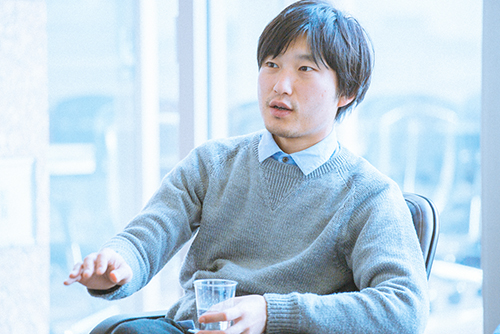
-When you tried it, did the audience around you feel like they were part of the space rather than being like, "What's that?"
M: We were having fun and relaxing. In that sense, it may have worked as a "device" (laughs).

-Now that we're talking about Asahi, Mr. Hasunuma previously had a solo exhibition at Asahi Art Square called "Soundlike," where he had discussions with various artists other than Mr. Mouri. Was there any special reason for inviting guests from the art world, rather than from the same genre?
H: At the time, I was doing a lot of research on the relationship between documentaries and fiction personally and as a hobby, and I thought it would be interesting to hear it from you all.
M: What really impressed me during our conversation was when Hasunuma said, "When I'm creating, it's a documentary, but when I present it as music at a venue, I turn it into fiction."
H: Yeah, I did.
M: I'm the complete opposite. I try to create something that exists only in my imagination as my own idea, and it only becomes a document when I present it in a public place. It was interesting to see the difference between the two of us. So, whenever Hasunuma-kun asks me to participate in a music event, I think the key is how we explore each other's completely opposite approaches. It was the same this time.
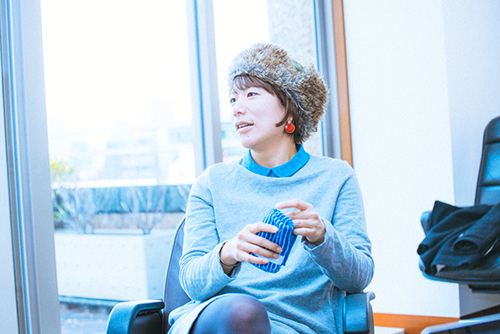
H: That may be true. However, a live performance is only for a moment, so it doesn't have much continuity in time. I think that a work is separate after all. That's where the meaning is difficult, or there are some parts that are difficult to combine. Also, first of all, it's difficult to talk about "documentary" or "fiction" with experts on musicians.
-I see.
H: It may not be everyone, but... I haven't met many people like that since I started making music, and I thought that the people we invited would be able to answer those questions, so that might be the stronger point. If the theme was something more music-specific, like "improvisation" or "how to organize a composition to make music as a group," I would invite those kinds of people, so that's how it felt. I held "Shuta Hasunuma's Studies" for a year as a related event to my solo exhibition at Asahi Art Square, and I invited not only people from contemporary art, but also designers and musicians, and I held symposiums and other events in that way, inviting people from different genres each time, so it was a strong extension of that. "Studies" felt like it was based on what I wanted to talk about.
Scoring and describing every composition
-When I listen to you, it seems like themes like time and records come up often in your talks, your new album "Time plays – and so do we." , and the upcoming TPAM performance "Composition: New Phil."
H: This time, we're changing the way we gather the group a little. Rather than trying to aim for one thing, we wanted to present something that says "there is only one interpretation," and the prototype for that is the current New Phil. We had them write everything on flyers and things like that, and we wrote down everything we did and made it into a score. We also scored the lighting, and we tried to make it portable so that we could perform overseas with everything written down, and we tried not to include any jazz-like free elements or improvisational elements. "This is all composed." There have been plenty of Phils up until now. It was okay to do things like, "Today the mood is good, so let's do it like this here," but not this time.
-In the past, did you often think about it at the last minute, like, "Let's try arranging this bit like this"?
H: Yes, that's true. But I wanted to try something different, so I thought, "Okay, let's start with Phil."
M: It was surprising. When I talked to Hasunuma-kun a few years ago, he said, "Because I'm not a performer." When I heard that, I thought, "What?! You've been performing so much? You even have a band named after your surname, "Hasunuma Team"!?" (laughs). But after watching his activities up close over the past two years, I've come to understand that Hasunuma-kun's basic stance as a "composer" makes sense. I think the theme of the performance this time, "Composition: New Phil," is also "making history." In terms of the band's origins, first there was Shuta Hasunuma, and the band was formed from the idea of "What would happen if we did Shuta Hasunuma's music as a team?", which expanded to "What would happen if we became a large group?" and became an ensemble... Each participant added their own arrangements, which was fun, and the album finally became a bottom-up album.

H: That's true. I really learned a lot from that.
-I see. So that's what the title of this piece is, "Composition: New Philharmonic." By the way, could you tell us what kind of approach you'll be taking this time?
M: It's almost time for the big day, but I still don't know how to get involved (laughs). He's started making things like installations, and he did some performance-like things at the last TPAM, so I can tell that Hasunuma's format is changing. When I performed with Shiomi Mieko at Music Today, Hasunuma's direction for me to participate was very clear. I specified that I wanted to use this piece...
H: That's right. I have a lot of requests.
M: Yes, that's right. But this time...
H: Well, maybe there is.
M: Then I'd love to hear it now (laughs).
-Oh, they're currently checking things in preparation for the actual event on February 11th (laughs).
H: But maybe I don't really understand this, but there are times when it's good and bad to say "This is how it is" at the beginning. There are times like with Ms. Shiomi Mieko where it feels like "That's all there is" and times when I want to discuss the matter a little more, or there are times when I learn something I didn't know during the discussion. I have high expectations and want to know, so this time it was definitely the latter.
M: That's right. We're still in the middle of discussing it (laughs). Ninety percent of the content has been decided, and the remaining ten percent is something like a new mid-live event that we're thinking of.
H: That's right. I have a bad habit of holding out possibilities until the very end. I don't let them go. There are all kinds of people, aren't there? I tend to leave possibilities open until the very end, and there are times when I'm like, "Sorry!" and times when I'm like, "Let's go for it!"
M: With "TIME," we had people from many different genres working together at the same time. There were dancers, poets, musicians, lighting designers, and I participated as an "artist." It felt more experimental than "Composition: New Philharmonic."
H: That's right.
M: I'm not good at performing, so I was a bit worried, but at that time I had my own booth, or rather my own place, and I was supposed to perform there when it was my turn to participate, so I think I managed to do it (laughs). This time, I've had that experience, so I think I can work it out a bit better.
H: Well, I have a very clear vision of actually creating music. Also, like with TIME, TPAM has a director who selects the works.
- Yes, that's right.
H: In 2012 and this year too, I was nominated by director Masayuki Nomura for the "TPAM Direction" project. I've been exchanging ideas with Nomura for a long time, and although he's a theater person, he's actually quite interested in other things.
M: You're a very flexible person.
H: For "TIME," he was thinking about what kind of expression he should create after the earthquake disaster... and that was entrusted to me and the poet Ryota Yamada , and the piece was based on a 60-line poem recited aloud. By bringing together people from genres who would never have gathered there on the same stage, it was a 60-minute piece where we shared a common time, and as players and performers, we danced, Mohri played his own pieces, and I conducted and performed, and that was a pattern where we kept brushing up the piece right up until the performance, and it got better and better as it went on.
But this time, "Composition: New Philharmonic" has quite a few concepts. Like "description". Basically, the same thing will emerge even if the performers change. That's a natural thing in music, but the concept this time is that not only the instructions for the notes but also "the space, costumes, lighting, and sound are all composed". But other than that, I'm working with friends who I've been playing with for about four years, so I'm familiar with the songs and it's very easy to do, and they're almost complete, so in that sense it's "90% done".
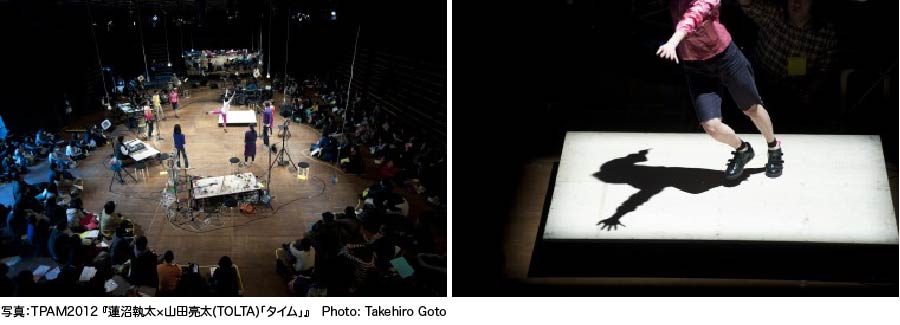
- I don't think that's the case, but to take an extreme example, do you think it wouldn't be a problem if all the members were replaced?
H: I think it's OK if you can get a score, but you still need to practice.
-I wonder what they'll do about Tamaki ROY 's rap...
M: But Tamaki's songs are even on karaoke (everyone laughs). It may sound a bit exaggerated, but I think that's what "making something historic" means.
-But I can imagine it just from the lighting and the performance, but with the Hasunuma Philharmonic there are so many different elements that it seems like it would be difficult to put into a score.
H: Nope. It's actually difficult. The interpretations are all so different. That's a minor point, but the same music can be interpreted in completely different ways. That's troublesome, to begin with. And I don't have the time to collect all that stuff (laughs). There are so many different kinds of weird people, so it's hard to make a score, but I don't think there will be many opportunities to do so.
M: Have you collected all the sheet music?
H: I have collected them. Everyone is playing while looking at the sheet music. I'm collecting them. But I think I'll have to wait until the performance is over before I can write about it.
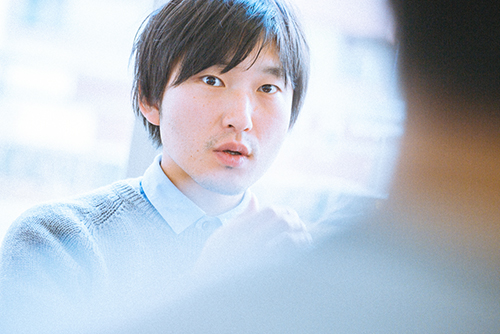
Conscious/unconscious approach
-I'm going back and forth a bit, but I think it's very interesting that you said "I was allowed to make a piece" rather than "I participated" or "I exhibited" in your work. Your work has a very strong element of sound, and I thought you had a sense of "playing" when you were creating it. Are you interested in the device itself and making it? Or are you making the device with the idea of "I want to make this kind of sound, I want to play it"?
M: It depends on the work, but I also feel that I am particular about sound. I don't know if it can be called music, but in terms of creating an atmosphere, I think that sound is quite important. A work that may be similar to this one is "Show Case," which I exhibited at Kawaguchi Media Seven last summer. It is an installation with visual elements that move and shine in various ways, and sound elements that make sounds with drums and metal basins, but at the same time, it also plays the role of a stage set. So, I held an event where musicians performed live in the work that makes sound = the stage space. I asked the Hasunuma team to perform there. At that time, how should I put it, my work became like a member of a band. I felt like I was "allowed to play" together with the musicians.
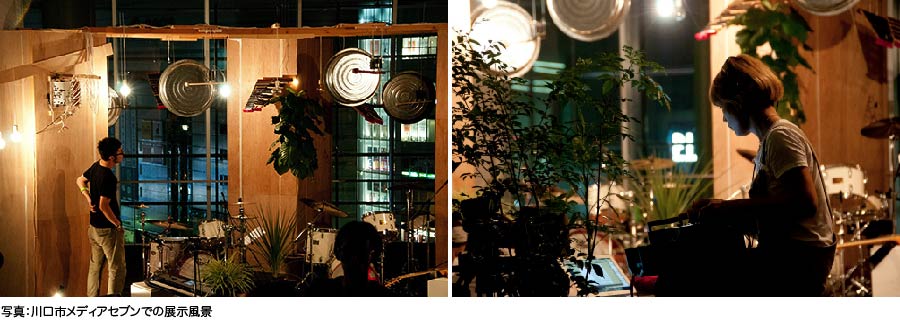
H: There's still room for improvement in terms of sound. I feel like one day you'll create something even bigger.
M: I want to make as many as I can.
H: But there's no mindset of a sound artist.
M: No, not at all.
H: When I have an exhibition, I feel like I'm suddenly labeled as a "sound artist" or a "video creator". I really wish they'd stop that. I just want to reach out to those kinds of things... For example, I can't express myself the way I want to unless I use methods that take me into the realm of sound art or video expression.
M: You want to try to expand your mind. I think that's especially true for Hasunuma.
-Come to think of it, you also exhibited videos at the Museum of Contemporary Art Tokyo.
H: The Museum of Contemporary Art Tokyo has three videos. The videos are of music being performed, and I edited the videos using video editing software while listening to the music.
And when those three images were output together, it became music.
-It's video, but you're once again "composing" using the video as material.
H: That's right. That's right.
M: He's someone who does field recordings.
H: Well, I'm not a professional.
I collect field recording, and field recording is a deep subject, so rather than being someone who does field recording, I'm more like someone who likes listening to the sounds of the world through field recording (laughs).
M: I think field recordings are very important when it comes to your artistic approach.
H: Yes. I think there are different ways of thinking about field recording. After all, it's all about the microphone and recorder, the brain, and the recorder's ears. If you put down the microphone and recorder and step away, it's a correct field recording in that it's "sounds that are not intentionally collected," but if you hold your own ears and microphone, the microphone doesn't have a brain, so when you end up recording the sound you want to, it's inevitably a compositional sound. There are coincidences in that, but I feel that the activeness of "going to catch" is the human will, so I think it's more like composition. Also, this is related to the New Philharmonic Orchestra, but the exhibition "Soundlike" that I did at Asahi was about "the viewer collecting sounds with their own consciousness and making them into music." In other words, rather than just putting down one piece of music and saying "this is my work," there were various sounds, so it was more like "listen to it and move your consciousness," but instead, I wanted to do something a little stronger, and I've been thinking about it since last summer.
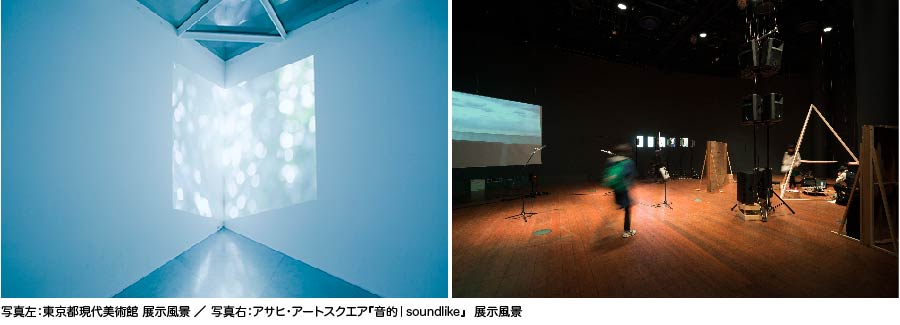
M: I wonder if this story ties in a little with the theme of "documentation and fiction" that we briefly discussed at the beginning. Hasunuma-kun's style is that he expects different things when "exhibiting," "performing live," and "becoming a film." Normally, in an exhibition, there is a process of making it public to show to people = documenting it, and then "having people look at it like this and then taking photos." However, Hasunuma-kun has the vibe of creating a work intuitively, seeing "what will it be like," appreciating it himself, and thinking about his next move. I just thought that maybe I was invited because I have that kind of vibe too.
Participating in TPAM
-So we've heard a lot about the intuitive and calculated aspects of each of your works, but do you have any predictions or expectations for the outcome of your collaboration at TPAM this time?
M: Before that, I would like to ask Hasunuma-kun how he would explain my existence to his fans (everyone: laughs).
H: What do you mean (lol)?
M: Umm, Hasunuma Philharmonic's album has come out, right?
H: Yes.
M: But I'm not participating in the Hasunuma Philharmonic's album. And there's no way that Hasunuma's fans know me, so I was wondering how to explain the situation where my work is being included in this Hasunuma Philharmonic concert.
H: An explanation? A stance or something concrete?
M: Hmm, I guess it depends on what role I play...
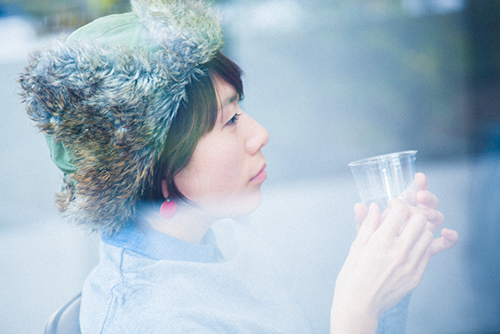
-We're actually currently in the process of discussing this (laughs).
H: That's right. The people who are credited are the "Hasunuma New Philharmonic." But even if we are asked to do it again, it won't become permanent. It can only be done once. The normal Hasunuma Philharmonic can do it, but it can't be done this time. That's the basic premise, so what else is needed? For example, we have Atsushi Sasaki write a critique. The critique will be included in the pamphlet for the day, and I give the audience a time to read it before the performance begins. There's something fun about reading it before the performance, isn't there? And then it might be a little help for what might happen, or it might define the problem, and I feel like I'm getting people to get involved with it. I think Mohri's stance is probably similar. And then, for example, there's a fashion brand called Theater Products, which is called "Costume Concept." We always perform in everyday clothes when we're with the Philharmonic. It's like "no costumes are costumes." That's because the performers are in different fields. For example, they're in the jazz field, or the classical field. When people with all these different ideas and backgrounds stand on the same stage, the differences in clothing arise, and I enjoyed being able to see the people next to me at the concert. But this time, we're trying to unify all of that, so there's a dress code, and we're making chef hats with everyone's music sheets.
- A chef's hat?!
H: For example, even if we perform in Brazil, the New Philharmonic's music sheet has instructions on how to make a chef's hat, so we wear that. And all the costumes are like the ones we would wear at a brother's wedding.
-It's a suit that doesn't stand out too much.
H: Yes. I think the dress code in Tokyo and the dress code in Korea are different, and there are changes depending on the place and time, or maybe it's the way of recording. After saying that, to explain about Mr. Mouri... I feel like he's bringing out the roots of the song. Playing music together is something that has been tried very hard historically. When you think about it, what we have to do is "remove the body", and I feel that by not having physicality at the center and having a machine do it, it becomes one, and I think that is "light and non-human sound". If something that is not made by humans is at the center, people will naturally surround it and become one. Well, it's still a prototype, and you're like "when do you think this performance is!" (※This article was recorded 5 days before the performance)
M: Well, then let's solve that right here and now (laughs).
-But in other words, you want to entrust the basic parts to Mr. Mouri.
H: In the only new piece in this performance, there are of course instructions for Phil, but I want the audience to conduct Phil. It's not just about reversing the relationship between the viewer and the viewed, but about messing it up.
-I'm curious what kind of instructions those are.
M: The key words we discussed during the meeting were "crackers and balloons." It's like a Tatsuro Yamashita concert (laughs).
H: We started talking about what can be done when you create sound without literacy or using the human body, and for some reason we started talking about baseball. Things like the Hanshin Tigers' Lucky Seven balloon, that is truly a "sound."
-It definitely is "sound" (laughs).
M: It was fun, and we thought it would be good to have a variety of events. We decided to put that into the composition. I think this idea needs some polishing, but I definitely agreed with the idea of messing up relationships.
H: Right. It's not about "inverting" but about "messing around." It's about making it messy, but keeping it together without making it chaotic.
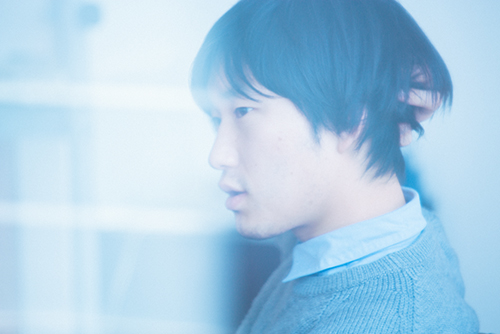
-That's quite difficult...
H: It's common to reverse things. There are some moving moments when a small mechanism can completely change the atmosphere. There's no point in me doing that, and there are many people who do it. Also, I think there's a lot more we can do to do that in a large hall like this time, and we have the people and materials.
M: But you don't like improvisation, do you? Does the audience give you instructions and you play?
H: Yes. That's true, but even if I say "please improvise," if you decide on a key, it's not improvisation. It's not really strict improvisation.
M: So, for example, if I were to play that high-quality sound at the venue...oh, right now it's just a meeting, is that okay? (laughs) And then, would it be possible to have the drums and bass play along with that?
H: I think it's possible. It depends on how you take it. It needs to have meaning, but I think it's fine if there are instructions.
M: I thought it would be interesting to imagine how a sound that you didn't think was high quality could become high quality.
H: Well, that's a common thing in music. I think it's easier to understand the inversion if you use drums or something. It turned into a real meeting (laughs).
-It's a very vivid story that's still unfolding ahead of the performance on the 11th.
H: But this time, we will not hold back, and we will deliver everything that Shuta Hasunuma Philharmonic has in terms of performance, and we have a clear intention to take that to places other than Japan. The nuance is, "You can't convey it unless you can do it with a satisfied face." After all, I think that the stage is about looking at "people." You can't look at the instruments. So you can't show a worried face, and unlike normal orchestras, we are not used to that kind of thing, and people who are doing things in a socialist and equal manner are relatively easily swayed by such things. To aura and the like. So I want to strengthen that as well.
Awareness of "performing arts"
-You mentioned the word "stage," but this time the slogan is "TPAM (Traditional Performing Arts Meeting)," and Hasunuma Philharmonic will be participating as a "performing art." Is there anything you are conscious of in that regard?
H: Mr. Mouri, what do you think about that?
M: Eh, I'm going to answer!? Hmm... I'm not sure, but I think this time it's about "music". Unlike the previous "TIME", we wanted to emphasize that aspect more. For example, many artists have done things like "expressing beyond genres", but this time Hasunuma's attitude is "I'm a musician, so it's music"...
H: That's absolutely true (laughs).
M: I'm not a musician, so I was thinking, "What is the best way to commit to music?" In that sense, it's probably the first time for me. When I participated in Otomo Yoshihide 's project, I was told to "do whatever you want," and various expressions came out, but this time, I feel like approaching music is a different way of thinking. On the other hand, Hasunuma's attitude towards TPAM seems to be that after that, he has put all that aside and is challenging himself to "try it as a musician in the performing arts."

H: Yes. That's right. (laughs) But I want to add that in the early days of Philharmonic we did a 360-degree stage. I was the center. But we don't do that at all in our current performances, and we basically do it in a general concert style of "stage and audience". It wasn't like that in the past. Our music is played through the PA and speakers, and it's mixed together to become one piece of music, but for example, when you look at a violin, you can hear the violin, even though you can't hear the sound from the instrument. I think that's how much it depends on the consciousness of the performer and the audience, but I think it's amazing to move your body on stage, and I was quite committed to that at the time (around 2012). Like, "After all, performing on stage is also a physical movement." I still have that as a base. So, I think it's a step in physical expression for the audience, and I think going to a venue to see one thing is very theatrical even from a historical perspective.
Even though it's called theater, modern theater has become extremely diverse, so I think there are many ways to approach it...
M: Speaking personally, I have high expectations for Hasunuma-kun's performance in a hall that can accommodate over 1000 people. I wonder how the things I've made so far will look when they're placed in such a large space, and how the sound will sound. This time, I'm participating under the name "stage set" instead of "stage art." I'm an amateur when it comes to the stage, and exhibiting in a theater hall is a completely different field from the usual field of art. I thought it would be impossible to suddenly say, "I'm going to do stage art that stands out visually," as I wasn't prepared enough. I personally see my work as more of a "spatial" rather than a visual...
H: It seems like you could do some visual stuff too.
M: Hmm, maybe. I'm more of a place fetishist. I have feelings like, "What will happen if I'm here? What kind of sounds will I hear?", so I'm very interested in architectural aspects that I can be involved in. This time, I want to get to the bottom of what kind of phenomenon I can create in the venue to leave a lasting impression, so you'll have to look forward to that at the actual event! (laughs)
H: Regarding "Composition: New Phil," I first started making music with a computer, and my first compositions were made by editing recorded sounds.
This is still the case today, but at some point I changed to arranging for bands, and then I created a Philharmonic Orchestra and performed live, and at the same time I was also doing programs like "Music Today," and as I continued doing that I gradually began to think that all of these things were "composition."

M: The entire composition is "composition".
H: Yes. That's what it's becoming like. But I think that even now, the image of composing is strong, writing on a musical staff. So it's like a young person with no experience is challenging that history (laughs). The New Philharmonic is like a culmination of five or six years of doing that. It feels like I'm putting everything out there. And after this we have a tour, and I think that tour will be without the concept of this tour, and will bring only the fun and flexible parts of what we've done with the Philharmonic.
-So does that mean you have no intention of taking the content of this year's TPAM performance on tour?
H: No. We will return to the normal costumes and composition instructions. However, that means we will return to a style that is constantly updated, where different music emerges at each venue.
-So "Composition: New Philharmonic" will be completed with that performance.
H: That's right. I think it would be quite difficult to perform this show in another location, and that's why we've put so much into it.
The way we play is also different from before.
TPAM/Perspectives on performing arts
-Finally, please tell us your outlook and expectations for the future of TPAM.
M: I get the impression that they're trying to do something that doesn't fit within the framework of "performing arts."
H: They let me do what I want.
M: It's amazing. It's a great opportunity for the people who are participating, as it brings together many people from overseas.
H: It's amazing because there's a chance that the next schedule will be decided there too.
M: Then it would be nice if we could do something like "sprinkle pepper" on it (everyone laughs).
I've always wanted to have that kind of relationship.
H: The spice of things! Or rather, I think Hasunuma Philharmonic itself is the spice of things at TPAM.
M: Yeah, I wonder how that will look.
-That's true. I think you both are aware of that, and as you say, people are looking forward to that kind of spice. But this is your second time, so is there anything you've noticed since your last appearance?
H: TPAM has a long history. There was a showcase held by Yasuo Ozawa and others during the event. But I think the context of that time is a little different from my current performance.
M: I hope that Hasunuma's performance will give everyone a sense of freshness and make them think, "So this is what music has become."
H: Yes. But I think there are people who think like that in other genres too... I think that even if it's not physical expression, if there is a stance or concept, films can be screened at TPAM. For example, I think that kind of thing can happen more directly in "art". In that sense, Kyohei Sakaguchi's "Mobile House", which participated in 2012, was very interesting. That kind of idea probably depends on the director's sense, but TPAM doesn't have an overall theme, so each director curates it based on their own concept, and we, the participants, present that part properly, and if we can understand later that "Oh, so that's what it means or expresses," I think it will lead to the next step.
M: It's a "prompted" performance. I thought that because I was working with musicians, they expected something lively that could only be done on the spot, but from what I heard today, I realized that this is not the case at all. This may be an abstract question, but I have just decided that I would like to be able to express Hasunuma's idea of "stage setting" in this performance (laughs).
H: You really turned this interview into a meeting. (laughs)
- It's just before the event (laughs). I'm looking forward to seeing what kind of score "Composition: New Philharmonic" will be completed as, including the performance and stage set.
Thank you for taking the time to see me today!
